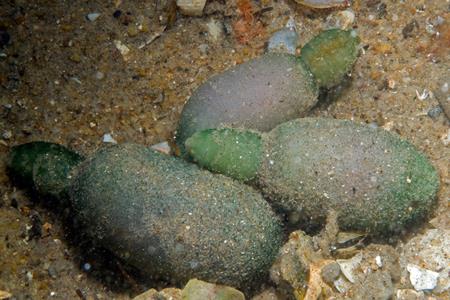General Description
In members of this genus the proboscis is forked, with the terminal branches shorter than the basal part (other spoon worms in this part of Australia have unbranched proboscis). Body up to about 8 cm long.
Biology
Spoon worms were previously classified in their own Phylum: Echiura. However, recent DNA studies have shown that these worms are modified polychaetes with very reduced chaetae and segmentation and they are now grouped in the Phylum Annelida.
Habitat
Under stones, usually in muddy, sheltered habitats.
Soft substrates
Distribution guide
Southern Australia.
Species Group
Depth
Shore (0-1 m)
Shallow (1-30 m)
Water Column
Max Size
8 cm
Diet
Organic matter
Commercial Species
No
Global Dispersal
Native to Australia
Species Code
MoV 1756
Conservation Status
- DSE Advisory List : Not listed
- EPBC Act 1999 : Not listed
- IUCN Red List : Not listed






